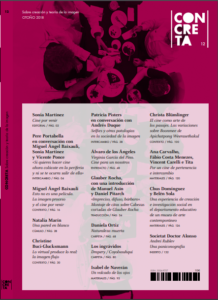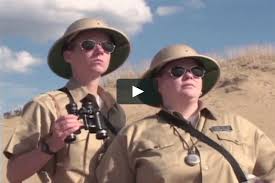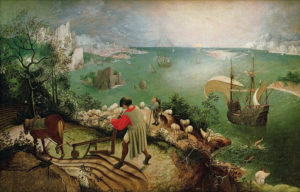With the aim of consolidating LAAV_ as an open and established space in the museum for audiovisual research with the communities, we ask researchers and / or artists interested in the LAAV_ work lines, to present their proposals. The call will be open between May 7 and June 8, 2019. More information about the call
Notes for a sexually dissident audiovisual anthropology. Quiela Nuc
We continue within the section About the impossibility of anthropological cinema with a text by the artist, curator and teacher Quiela Nuc, who makes a personal journey, this time, through her narrative and aesthetic affiliations. Present from the beginning of the text to the last image, the recently disappeared Barbara Hammer, whose work “represents a valuable archive and repertoire of experiences, places and identities traversed by that “other” desire, the one that is non-hetero-regulated”. Continue reading
Laav_ 18 Meetings. Museums and University. Investigate in a hybrid space.
We published the rapporteurships and reflections that emerged from the last Laav_18 Meetings, in which we deal with a common Museum-University space for research and creation.
Relatorías. Elena Sánchez Nagore, Coral Bullón, Zoe Hernández and Pablo Coca.
Meetings Laav_2018. Museums and University: research on a hybrid space. Lorenzo Bordonaro.
The submerged part of the iceberg. Audiovisual Education between the museum and the university. Javier Fernández Vázquez.
Practicing experimentation linked to audiovisual anthropology.
Sara Sama Acedo.
Laav_ in Concreta 12, “Cinema to come”

The new issue of Concreta, the research journal about image, dedicated to the project Cine por venir (“Cinema to come”), includes an article about Laav_: An experience of creation and social research in the educational department of a contemporary art museum. An image of the latest production of La Rara troupe, La humana perfecta, illustrates the cover. The presentation of the journal takes place on Thursday November 29 at the Filmoteca of Valencia, with Pere Portabella, Nuria Enguita Mayo (Concreta), Sonia Martínez (Cine por venir) and Sofía Asencio (Sociedad Doctor Alonso).
Puta mina on Filmin
After screening at the Ethnographic Film Festival of Ecuador (Quito), Alcances (Cádiz), La Cabina (Valencia), LAN- Audiovisual Festival Obrero (Bilbao) and Etnovideográfica (Zamora), you can watch the film on Filmin platform.
Two texts about Puta mina
We publish two new texts around Puta mina (Damned mine): The voices of the mine. Regarding the process in creating Puta mina (Damned Mine), by Chus Domínguez, and La palabra frente a la oscuridad, un prólogo para Puta Mina, by Daniel Bernabé

LAAV_ 18 Meeting. Museums and University. Researching in an hibrid area.
November 23 – 24, 2018.
Meetings to think about the possible relationships between the University and the Museum, with the intention of imagining a common space, open to experimentation and citizen participation.
Access to the program and the documentation of the meetings.
The Impossibility of Anthropological Cinema
Contradictory fragments collected in the ruins of visual anthropology. A lucid and critical reflection of the Portuguese anthropologist and filmmaker Gonçalo Mota, with whom we continue a collective construction project about the possibilities / impossibilities of audiovisual anthropology.
Laav in Sociología Ordinaria (Ordinary Sociology) Meetings
On Tuesday 8 May, we participate in Encuentros Sociología Ordinaria (Medialab-Prado, Madrid) with “Comunidades, audiovisual e investigación experimental; una experiencia de antropología y arte” (Communities, audiovisual and experimental research; an anthropological experience and art”. The slogan of the meetings this year is “We do it and we shall see”, an emotional tribute to the essence of Sociología Ordinaria, with the objective of breaking the academic walls, including other voices and experiences.
Notes about, for and with LAAV_. Miguel Ángel Baixauli
First of all LAAV_ is an experimental project, an empirical and procedural laboratory. Each part of its processes is approached as an experiment of creation, a learning experiment and as a research experiment. It always tests different paths to collectively learn, to stimulate co-learning, which construct collaborative experiences of research and collective creation. This text is also an experiment, a textual laboratory. It does not aim to explain the work of LAAV_, but rather to dialogue with it to collectively develop a theoretical experimentation. (Seguir leyendo)

